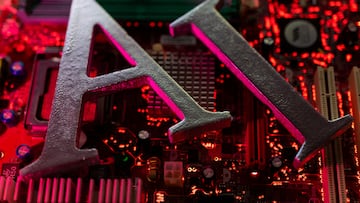From meme to meltdown: Why the “Inverse Cramer” strategy has Wall Street on edge
The CNBC host says artificial intelligence isn’t a bubble. History, and the internet, beg to differ.


Jim Cramer has once again reassured investors that everything is fine. Which, if you know Jim Cramer’s track record, is precisely why the internet thinks it isn’t.
BREAKING: Jim Cramer says the AI boom is different than the dotcom bubble.
— unusual_whales (@unusual_whales) September 30, 2025
What is the “Inverse Cramer”?
The CNBC host, whose stock picks have historically aged like milk in the sun, declared this week that the billions pouring into artificial intelligence are nothing like the dot-com bubble of the early 2000s. Back then, he infamously told viewers internet stocks were “the only ones worth owning” – right before the crash. More recently, he advised against Netflix and HP just before both surged. Even the 2008 financial crisis has a Cramer subplot.
It’s no wonder that an “Inverse Cramer” ETF – effectively betting against his calls – briefly existed, and that social media turns every new pronouncement into a punchline.
“Big Tech is too big to fail”
Cramer isn’t buying the bubble talk. In his view, Silicon Valley’s giants are too flush with cash to implode. “If Google and Amazon and Meta make bad investments and take big losses, that’s just another day at the office,” he said. Worst case, they can write off the losses, pivot, and carry on.
He even suggested that skepticism about AI hype acts as a safety valve: if everyone jumped in without doubt, “we’d all drown.”
Critics aren’t convinced about AI position
Plenty of analysts, however, see familiar red flags. For example, Nvidia’s $100 billion investment into its biggest customer, OpenAI, struck many as “circular financing” – a move that props up both companies until the music stops. Meanwhile, US growth looks impressive on paper, but job revisions show hundreds of thousands fewer roles than expected, and household debt is climbing. There are some experts in the field though that suggest a crash could actually help everyday Americans.
But back to Cramer and what happens when he pushes out a strong opinion. Here’s some of the online reaction...
— Eric Ferguson (@speculatinquire) September 30, 2025
Now we are really doomed
— SalesBuzzCEO (@salesbuzzceo) September 30, 2025
Time to diverse
— DirtyPepe (@OldDirtyPepe) September 30, 2025
Brace for impact
— Kang (@thuhkang) September 30, 2025
SELL IT! SELL IT ALL!
— Frost Caldwell (@Frost_Caldwell) September 30, 2025
Time to send the candles in. pic.twitter.com/1JJaJZGA45
— Blacksea (@333blacksea) September 30, 2025
Ironically, one user asked X’s own artificial intelligence, Grok, for some insight. The response was clear enough:
“Jim Cramer argues the AI boom is sustainable, unlike the dotcom bubble, due to stronger fundamentals in Big Tech like better funding and real applications. Critics often see his optimism as a contrarian signal, given his past calls. What’s your take?”
Clearly no one knows for sure what lies ahead, and there are a number of options available to Washington to take more control. For now, though, markets keep climbing, Cramer keeps smiling, and trolls and meme artists sharpen their pitchforks... just in case history repeats itself.
Related stories
Get your game on! Whether you’re into NFL touchdowns, NBA buzzer-beaters, world-class soccer goals, or MLB home runs, our app has it all.
Dive into live coverage, expert insights, breaking news, exclusive videos, and more – plus, stay updated on the latest in current affairs and entertainment. Download now for all-access coverage, right at your fingertips – anytime, anywhere.
Complete your personal details to comment